A New Student-Curated Exhibit Brings Gnome Homes to the Garden
News
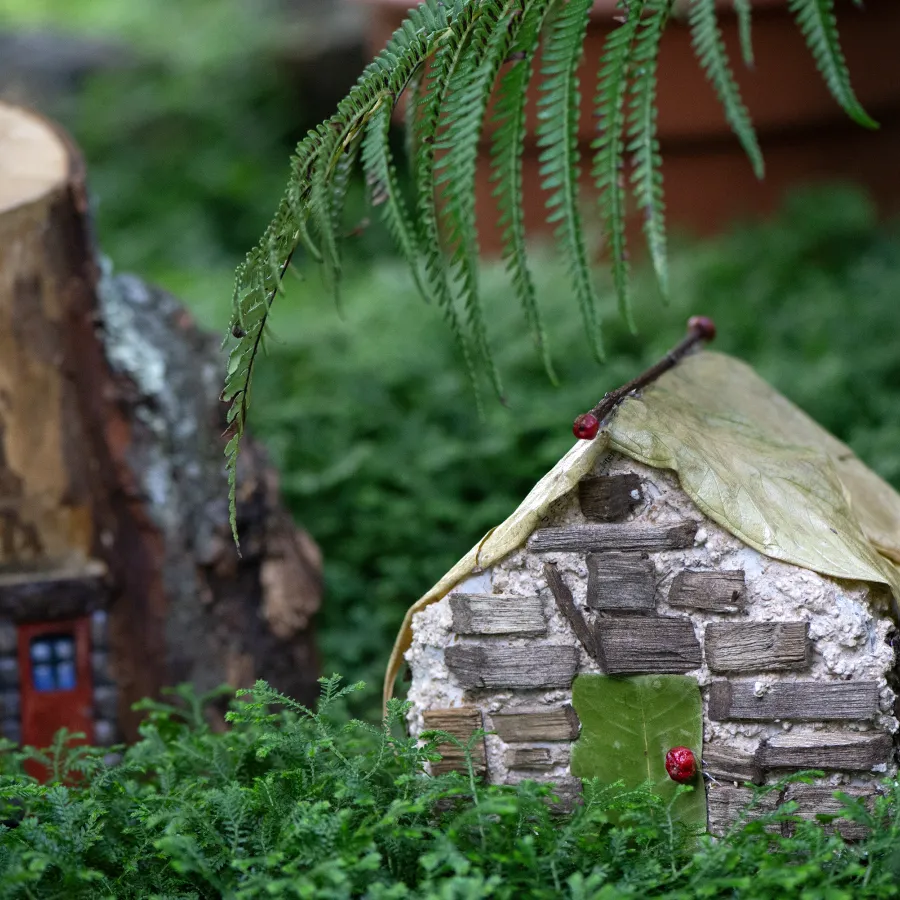
Published April 29, 2025
Often, visitors of the botanic garden will encounter Smith students milling around the greenhouses, darting from one plant to another with a sketchbook or camera in hand. Starting in May, however, guests are encouraged to keep an eye out for a different kind of botanically-inclined creature: gnomes!
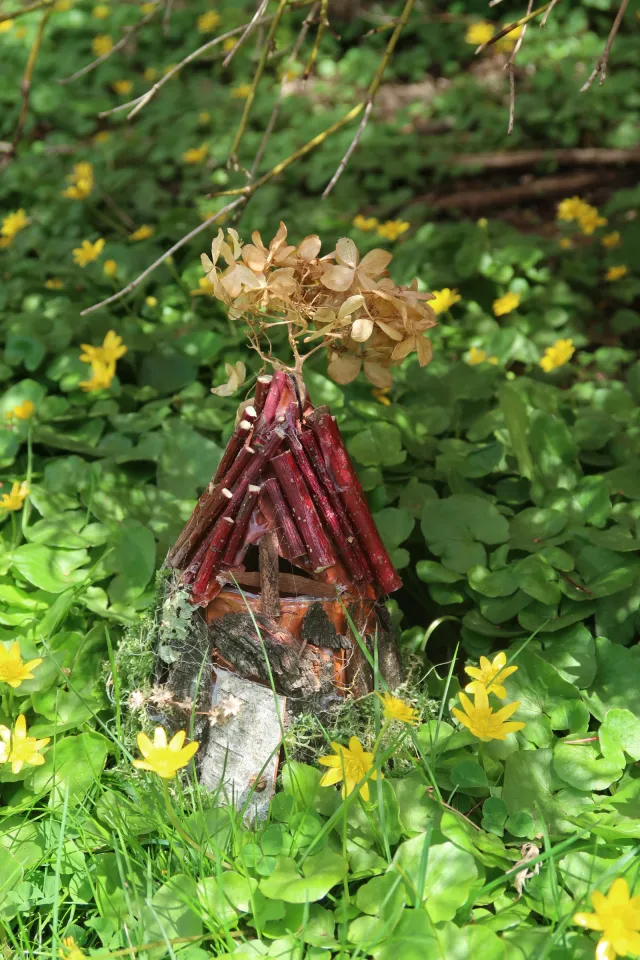
Starting May 1, Lyman Plant House and the outdoor gardens will feature a new artistic exhibit featuring handmade gnome homes created by the Botanic Garden Student Educators (BoGSEs)–and how could any gnomes resist moving into such adorable and expertly crafted houses?
The Gnome Homes exhibit is an end-of-year project co-curated between the BoGSEs, the education intern, and the Associate Director of Education Sarah Loomis. The prompt was to “develop an exhibition that focused on developing a set of gnome homes with the intent of inviting visitors of all ages to explore the greenhouses and gardens from a different perspective.” The BoGSE team set to work creating their own homes that showcase their unique talents and personalities as individuals within the group. Each of those homes correspond with one of the houses in Lyman—and then other homes were created with the intention of existing in an outdoor garden space.
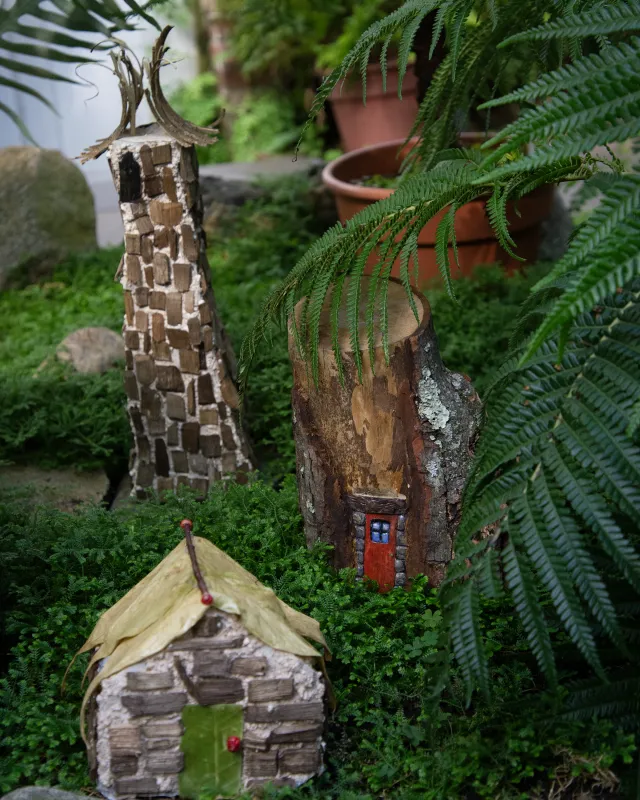
“Most of the homes built for inside Lyman, the creative process started with where the home would be placed, because they are based off of the room that they're in. First I picked a spot, which was Warm Temperate House because I knew I wanted to make something aquatic to go in the little pond in that house,” Elio Berkovic ’27 said. “I started by thinking about how the house would look, how it would mesh with things in the house, and what plant materials I would incorporate. And I ended up with a mossy, aquatic-y looking house.”
The BoGSEs used exclusively natural materials. The base for each indoor home is papier-mâché, and then recycled plant materials were added on top to create a unique exterior. Once the homes were finished, a spray sealant was used as protection against the moisture and heat from the greenhouses.
“A lot of the materials were taken from the compost bin at Lyman–plant leaves and sticks that were going to be discarded anyway. We wanted it to all be reusable, nothing was really cut from the botanical garden,” Ella Sommerfeld ’27 said. “Other materials were collected by Elio or staff members that they found outdoorst. Those were more solid materials.”
The gnome homes that were built for the outdoor gardens were mainly crafted using solid carved wood, a more durable and long-lasting yet still natural material. The wooden outdoor homes were painted using natural paints to add colorful elements and blend with the environment of the garden.
“We want the outdoor homes to be able to degrade over a long period of time,” Sommerfeld said. “It’s meant to comment on the ways that we are putting ourselves out into nature and interacting with nature—and what we're leaving behind.”

“Part of what is unique about the exhibit is that it is ephemeral, that it's not meant to be there forever. It asks the question: Can we appreciate it as art that is temporary? And can we also appreciate it as a part of the landscape?” Education Intern Abagail Coleman ’26 said.
While the gnome homes add a whimsical, fairytale-like feeling to the botanic garden, they were also crafted to encourage the creative use of recycled plant and natural materials that would otherwise be overlooked or discarded. The artists hope that viewers of all ages will be inspired to consider the possibilities of sustainable, environmentally-focused design. Ultimately, this could lead to conversations about how we relate to the world around us now, going forward into an uncertain climate future, and the discussion of our relationships with nonhuman plants and animals.
“I really want people to take this chance to look closely at things. One of my houses will be in the Rock Garden, a place people really could benefit from looking really closely at because of all the small plants,” Berkovic said. “Taking the close observation tactics that people are using to find the homes in Lyman, and applying those outdoors to really explore nature [would help people discover] so many things that are so easy to miss. This is especially true in places like the Rock Garden where there is a very high diversity of species, in a very small space.”
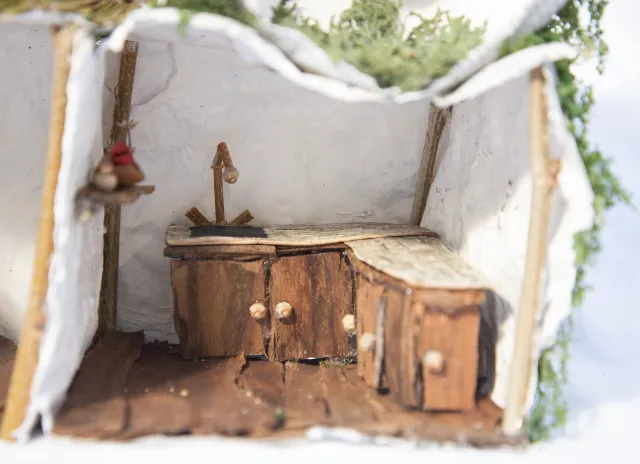
Exhibit brochures, which will be in the lobby of Lyman along with a look inside a gnome home, point out where visitors can find each indoor gnome home, as well as where they can find information on gnome lore. As part of the exhibit, BoGSEs developed a narrative surrounding the introduction of the historic community of gnomes that live on Smith College campus, announcing their presence on the 150th anniversary of the school. Each gnome home takes inspiration from the plant house in which it resides—featuring elements that are present in the plants surrounding them. That part of the exhibit will be on display in Camelia Corridor.
Looking at the gnome homes, with their fern siding, pinecone roofing and flower stalk chimneys, people might think of fairy houses. Gnome homes exist in a similar childhood fantasy world. Yet, Coleman makes clear that the two are distinctly different.
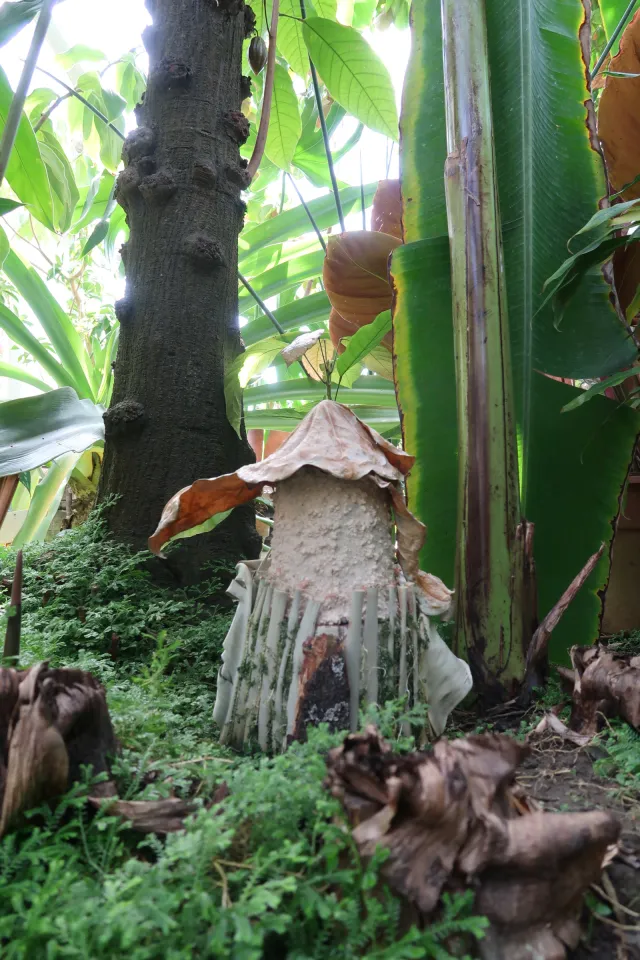
“Even though fairies and gnomes are both wonderful, fantastical forest creatures, we choose to feature gnomes because they are historically left to the sidelines. And we wanted to highlight something that other botanic gardens might not have highlighted before. We also felt like gnomes aligned with the values and the attitudes of Smith—a subject that was slightly unconventional felt like a good fit for Smith, because we're kind of in an unconventional space. We thought that this idea of gnomes that live on Smith college campus and share the space with us would be a really good way to have people, especially younger visitors, think about the ways they interact with nature and the space that they share with other creatures.”
While children are the primary audience for the exhibition, Coleman said that the project is intended for visitors of all ages–and especially Smith students.
“Gnome homes cater to kids who are having those fantastical thoughts and creative ideas right now. But they’re getting to see it implemented in a botanic garden space, which might historically have been more conventional, and it's presented as a collection of living [objects]. In having this imaginary, playful element as a part of the botanic garden, we wanted to give children an opportunity to engage with this imaginative play in a way that still gets them thinking about their world,” Coleman said. “I think if I were a kid, I would have been really fascinated with that. And that’s what we’re hoping to do: to appeal to children, and also to Smithies’ inner children.”